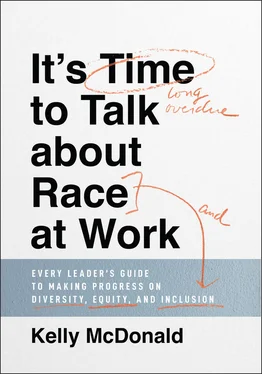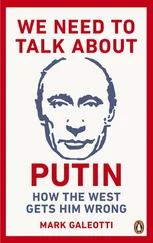2 The sport of skiing had continued to be one of the least diverse: 85 percent of skiers are White. Blacks comprise 14 percent of the U.S. population, but fewer than 2 percent of skiers. The sport is so overwhelmingly White that comedian Kevin Hart, who is Black, has an entire routine built around telling the story of when he took his family to Aspen to ski and what it was like. It's a hilarious routine because he makes it so, but the stark truth of what it is like to be the only Black family on the ski slopes makes a clear and uncomfortable point.
So what did the ski industry do? Let's take these two different demographic issues one at a time.
ADDRESSING THE AGING SKIER PROBLEM
It was imperative that the ski industry find new skiers. The industry poured a great deal of money into research to learn what was keeping people from trying the sport and to identify new opportunities and customer segments. What they learned was that young people didn't really want to ski. The key reason given: “It's not for me. Skiing is what old people do—that's my parents' sport.” Younger people wanted their own sport. They wanted to do things with their friends that were different than what older people do. Enter snowboarding.
Snowboarding was growing in popularity, but many ski resorts did not allow snowboarding on their public slopes! Wow—that was a big eye-opener and the biggest, most-obvious problem to solve. But that wasn't the only barrier. The research also showed that younger winter sports enthusiasts had their own ideas about the sport:
Ski passes/lift tickets were too expensive.
The gear and equipment were too expensive.
The sport was too time-consuming because snowboarders had to hike up to the backcountry as they weren't permitted on the slopes.
With these consumer insights, the ski industry attacked the issues and changed everything : rules were changed to allow snowboarding on the slopes and at resorts. Ski passes and lift tickets became more flexible and a better price value. The ski industry worked with retailers and outfitters on extensive and creative equipment rental programs and significant price discounts to make the gear as affordable and accessible as possible.
It worked! By the mid-1990s, snowboarding had become the fastest-growing winter sport in the world . Snowboarding is now the focus of most young people learning an alpine sport; in fact, more than 80 percent of kids participating in alpine sports today choose snowboarding. This is significant, because it reflects the reality that the survival of any sport or industry is dependent on new users, new customers, or new participants.
But if the ski industry hadn't identified why new participants weren't being drawn to the sport, they'd have never known what the problem was and how to fix it. They knew they weren't attracting young skiers, but they didn't know why . It never occurred to them that young people viewed skiing as a sport for “old people” or that the equipment was too expensive. The only perspective they had was that of their core customers, who were pretty much all the same ( old ). It was only when they invited the opinions and thoughts of young people that they got an entirely different perspective.
Here is another key thing to note about this example: The ski industry sought the input, insights, and opinions of young people. They asked for their thoughts. It's not as if young people were contacting the ski industry and volunteering their perspectives. The ski industry “put the welcome mat out” for fresh perspectives and new ideas. And they got them. They listened, responded, and made changes. The new perspective saved the ski industry .
ADDRESSING THE LACK OF DIVERSITY ISSUE
Rob Katz is the CEO of Vail Resorts. After the death of George Floyd, he reflected on the lack of diversity in the ski industry and wrote a corporate memo sharing his thoughts. “As much as I have been saddened seeing these acts of racism across our country, I am also confronted by the fact that our Company and our sport are overwhelmingly White, with incredibly low representation from people of color. I see this as a personal failing,” he said.
Katz was brutally honest and forthright—and humble—in his corporate memo. While acknowledging that the lack of diversity must be addressed and remedied, he also admitted, “I am not sure I fully know what the solution is,” but he promised to “start by talking about it” with his employees at an upcoming event. His honest assessment of the problem was impressive. One of the things he addressed in his memo was the tendency to be defensive when talking about the Whiteness of the sport that his core customers so dearly love:
While I'm sure most everyone in our industry believes they are tolerant and welcoming, we need to acknowledge that there are parts of the culture of our sport that are clearly not inviting. Maybe the image we have created of the mountain lifestyle needs to be more varied. Maybe, as a fairly close-knit and passionate group of skiers and riders, our community carries a deep implicit bias. It would not be a stretch to call us a clique. Maybe it's our fear of change. While I would like to think that I have been an agent of change in this industry, a decade later I am still running a company that has very limited racial diversity .
Growing diversity in the ski industry will take some time. It won't happen overnight. But it won't happen at all if the sport is not inviting and welcoming to diverse skiers of all races and ethnicities. I am encouraged by Rob Katz's candid assessment of his company's and his industry's lack of diversity and his commitment to work to do better. Vail Resorts is a huge company. It has 34 mountains in North America, and it is successful, wealthy, and the leader in the industry. Its sheer size gives it a big voice and tremendous influence. There is no doubt the steps it takes to put the welcome mat out for new and diverse customers will ripple through the rest of the industry and set the bar for its competitors.
In your business, or within your team, if everyone is pretty much the same, it's easy to miss opportunity, because your sameness becomes your blind spot . This is especially true if your business is successful. Doing well in business can lead to a laser focus on “what's working,” rather than “what are we missing ?”
The answer to “what are we missing?” comes from different perspectives . It takes someone seeing something in a different light to point out a potential problem—or opportunity. That's why having an all-White or mostly White business can cost you: You may not get a different perspective or view on business issues that could grow your sales and profits. You might not see the signs. Look at your business as objectively as you can and see if any of these signs resonate with you. If so, you're probably missing out on some opportunities that could grow your business.
SIGNS THAT YOUR BUSINESS MAY BE MISSING OUT ON OPPORTUNITIES
The following list highlights signs that your business may be missing out on opportunities as a result of bias:
You could be, but are not, serving different populations: Black, Latinx, Asian, other people of color, LGBTQ+, different ages/generations, men, women, non-binary, disabled, and military.
You are serving different populations, but your staff isn't diverse. There is no one on your staff who might share the perspective of some of your best customers and, therefore, no one knows how to serve your diverse customers better.
You have trouble finding or keeping people of color as employees. Is it all on them, or is some of it on you? Perhaps your work environment isn't as welcoming or as comfortable as you think.
Читать дальше












